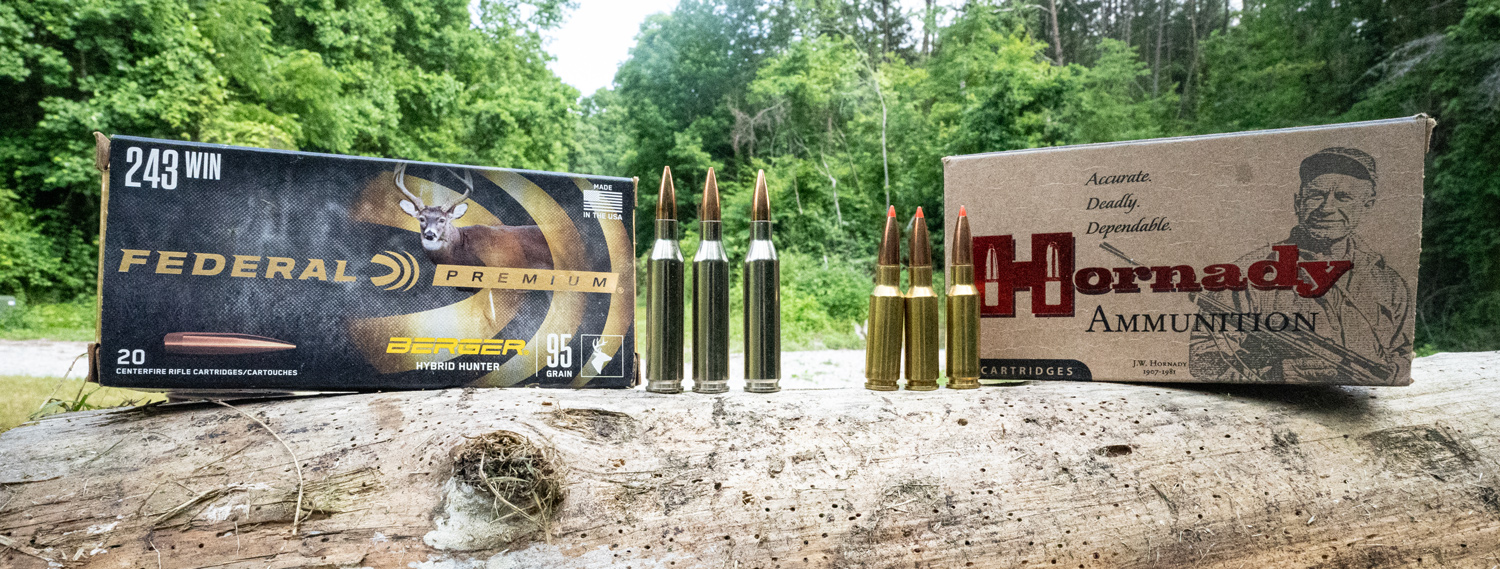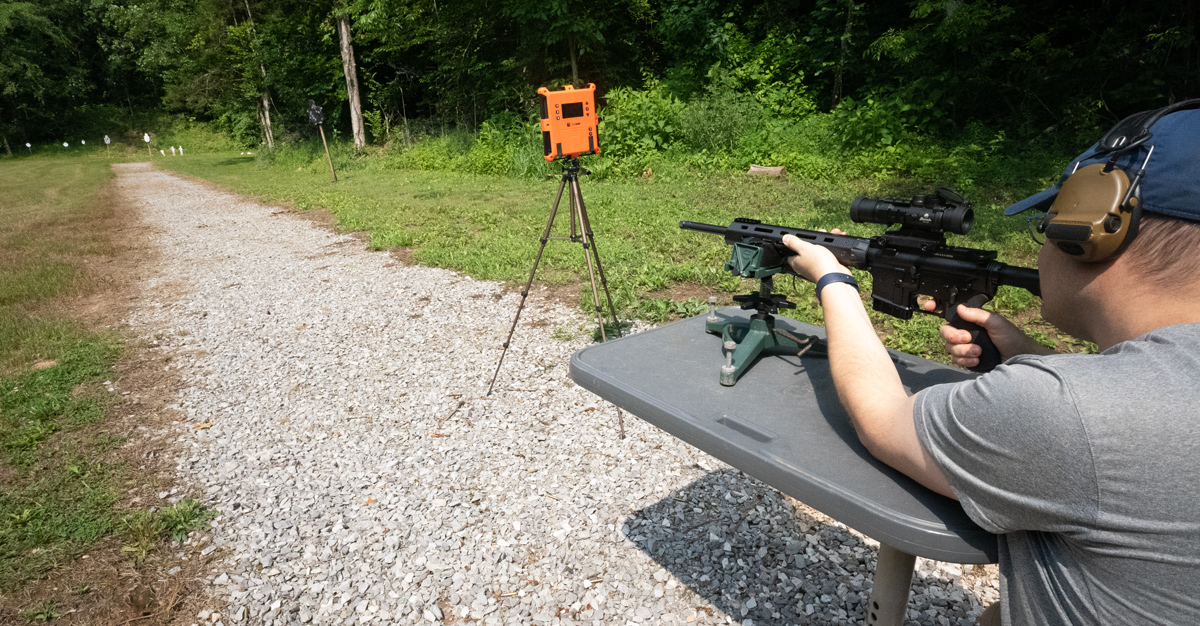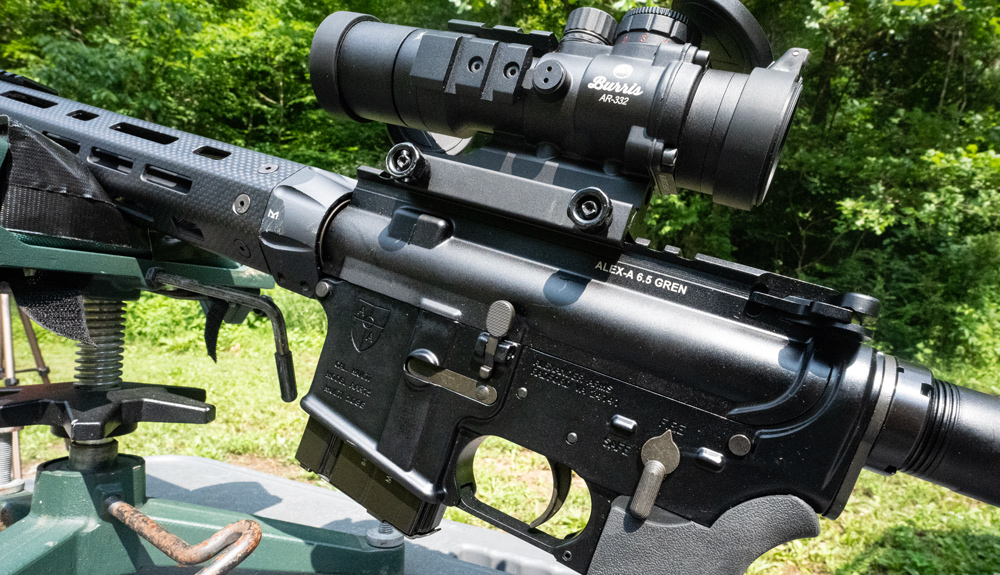An in-depth look at the 243 vs 6.5 Grendel calibers. What’s a better choice for your next hunt?
For target shooters and hunters looking for a new option when they hit the range and the field, the .243 Winchester and the 6.5 Grendel are two excellent options. While they can serve similar functions, these two cartridges can be very different, both in how they perform and what types of rifles they are paired with. So, what’s the difference between 243 vs 6.5 Grendel?
243 vs 6.5 Grendel
Most shooters will find 243 Winchester delivers more benefits in terms of ballistics. 243 Win is faster than 6.5 Grendel, has a flatter trajectory and typically delivers more energy downrange. Generally, you’ll find more options for ammo in 243 than 6.5 Grendel too. However, if you’re interested in an AR-10 platform style rifle, 6.5 Grendel is probably a better option for you as 243 Win options are still fairly limited.
| .243 Remington | 6.5 Grendel | |
|---|---|---|
| Released | 1955 | 2003 |
| Bullet Diameter | 0.243 inches | .264 inches |
| Rim Diameter | 0.473 inches | .44 inches |
| Case Length | 2.045 inches | 1.52 inches |
| Total Length | 2.7098 inches | 2.26 inches |
| Bullet Weights | 50 to 100 grains | 90 to 130 grains |
| Rifle Type | Mostly bolt action | AR-style sporting rifles and bolt-action rifles |
Size and Shape
The .243 Remington and the 6.5 Grendel have obvious size and shape differences. If you were to hold them in your hand, the overall length is the first thing you’d notice, as the .243 Remington is noticeably longer than the 6.5 Grendel. In fact, it’s roughly 25% longer in overall length.
The Grendel, however, is wider at the bullet, giving it more of a squat appearance than the more elongated .243 Winchester. This bullet difference plays out in the weight of the bullets as well; the .243 Remington, with a thinner bullet, maxes out around 100 grains, while the 6.5 Grendel goes stops at about 130 grains.
Market Availability and Affordability
The market matters to gun owners. After all, if you can’t find cartridge for your rifle, or you simply can’t afford practice rounds, what good is the firearm? The .243 Winchester, while not the most prolific cartridge, is a bit more buyer friendly. It generally has a lower price (although it’s not significant) and you’ll usually find more options.
Take a quick look at the top manufacturers’ websites and you’ll see the difference. For example, Federal Premium, at the time of this writing, had 19 product options for the .243 Winchester. They only had 4 options for the 6.5 Grendel. Hornady listed 9 different options for the .243, yet only had 3 choices for 6.5 Grendel shooters.
This may not reflect the availability of cartridges at your local gun shop, but most rifle owners will find more options if they choose the .243 Winchester.
Rifle Types
There are numerous bolt-action rifles available for both of these cartridges. However, the .243 Winchester is essentially limited to bolt action, with a few lever-action rifles on the market. The 6.5 Grendel, however, is available for both bolt action and the popular AR platform.
.243 Win vs 6.5 Grendel: Performance
A cartridge can have a better price and more options, but if it doesn’t perform at the range and in the field, it’s not going to be selected by gun owners. Let’s see how these two round compare for velocity, energy, and trajectory to see if one is a “better” cartridge.
Velocity
| Product | Muzzle Velocity (fps) | 200 yrd Velocity |
|---|---|---|
| .243 - Barnes 80-grain TTSX-BT | 3,350 | 2,755 |
| 6.5 Grendel - Barnes 115-grain TTSX-BT | 2,590 | 2,155 |
| .243 - Hornady 87-grain V-MAX | 3,240 | 2,754 |
| 6.5 Grendel - Hornady 123-grain SST | 2,580 | 2,247 |
| .243 - Federal 95-grain Fusion | 2,980 | 2,493 |
| 6.5 Grendel - Federal 120-grain Fusion | 2,600 | 2,107 |
| .243 - Nosler 90-grain Ballistic Tip | 3,100 | 2,599 |
| 6.5 Grendel - Nosler 120-grain Ballistic Tip | 2,400 | 1,872 |
When we look at the velocity statistics for these cartridges, we see that the .243 Winchester is clearly the faster round. All of the .243 products we looked at have muzzle speeds right around 3,000 feet-per-second (the only one below 3,000 was at 2,980), with one cartridge surpassing 3,330 fps. The 6.5 Grendel, on the other hand, was right between 2,400 and 2,600 in all cases.
The .243 Winchester is clearly the faster round, an advantage that has benefits for both ballistic performance, distance capabilities, and accuracy.
Winner: .243 Winchester
Energy
| Product | Muzzle Energy (ft-lbs) | 200 yrd Energy |
|---|---|---|
| .243 - Barnes 80-grain TTSX-BT | 1,994 | 1,349 |
| 6.5 Grendel - Barnes 115-grain TTSX-BT | 1,713 | 1,186 |
| .243 - Hornady 87-grain V-MAX | 2,028 | 1,465 |
| 6.5 Grendel - Hornady 123-grain SST | 1,818 | 1,379 |
| .243 - Federal 95-grain Fusion | 1,873 | 1,311 |
| 6.5 Grendel - Federal 120-grain Fusion | 1,801 | 1,183 |
| .243 - Nosler 90-grain Ballistic Tip | 1,920 | 1,349 |
| 6.5 Grendel - Nosler 120-grain Ballistic Tip | 1,534 | 1,108 |
Things begin to tighten up as we move into the energy comparison. While the stats are a bit closer, the .243 Winchester appears to maintain an energy advantage. At both the muzzle and at 200 yards, the .243 provides higher energies compared to the 6.5 Grendel.
For hunters, this makes a difference in how the cartridge can be used; it’s entirely possible that some game animals, which may be legitimate targets with a .243 Winchester, should not be harvested with the 6.5 Grendel. But again, the advantage, in many cases, is not significant. (For example, the muzzle-energy difference for the Federal products is only 72 ft-lbs.)
Winner: .243 Winchester
Trajectory
Trajectory matters to hunters and target shooters. While a good marksman can compensate for trajectory drop, the straighter the shot, the better. For these two bullets, it looks like the .243 Winchester once again has an advantage, as the drop is slightly less than that of the Grendel.
The .243 Winchester from Nosler, when zeroed to 100 yards, drops 2.8 inches at 200 yards. Under the same conditions, the 6.5 Grendel drops 5.6 inches. The same trend is seen when comparing other cartridges.
It’s not a massive difference, but it may inform your decision if you are going to pursue game animals or targets at a distance of 300, 400, or 500 yards.
Winner: .243 Winchester
So…Why Choose the 6.5 Grendel?
We just went through three different factors; all were advantages for the .243 Winchester. We also discussed how the .243 has more cartridge options, and could be slightly more affordable on a per-round basis. So why even consider the 6.5 Grendel?
There are a few factors, but the top advantages are recoil and the AR platform.
All things the same, the 6.5 Grendel provides a softer impact than the .243 Winchester. If you are teaching a recoil-sensitive shooter, or if you want to spend hours at the range without a sore shoulder, the 6.5 Grendel may be a better choice. (The .243 Winchester is not a hard-hitter, the 6.5 Grendel is just lighter.)
The 6.5 Grendel is loaded into AR-style “sporting” rifles, which is a popular option for today’s gun owners. The AR platform isn’t popular for the .243 Winchester (though Wilson Combat does offer a high end 243 Win AR-10), so many users may choose the Grendel regardless of performance.
Whether you need .243 Winchester ammo or ammunition for your 6.5 Grendel, you’ll find affordable prices on high-quality rounds at ammotogo.com.
Visit our online ammunition store and browse our easy-to-use search function to find the perfect round for your specific needs.




